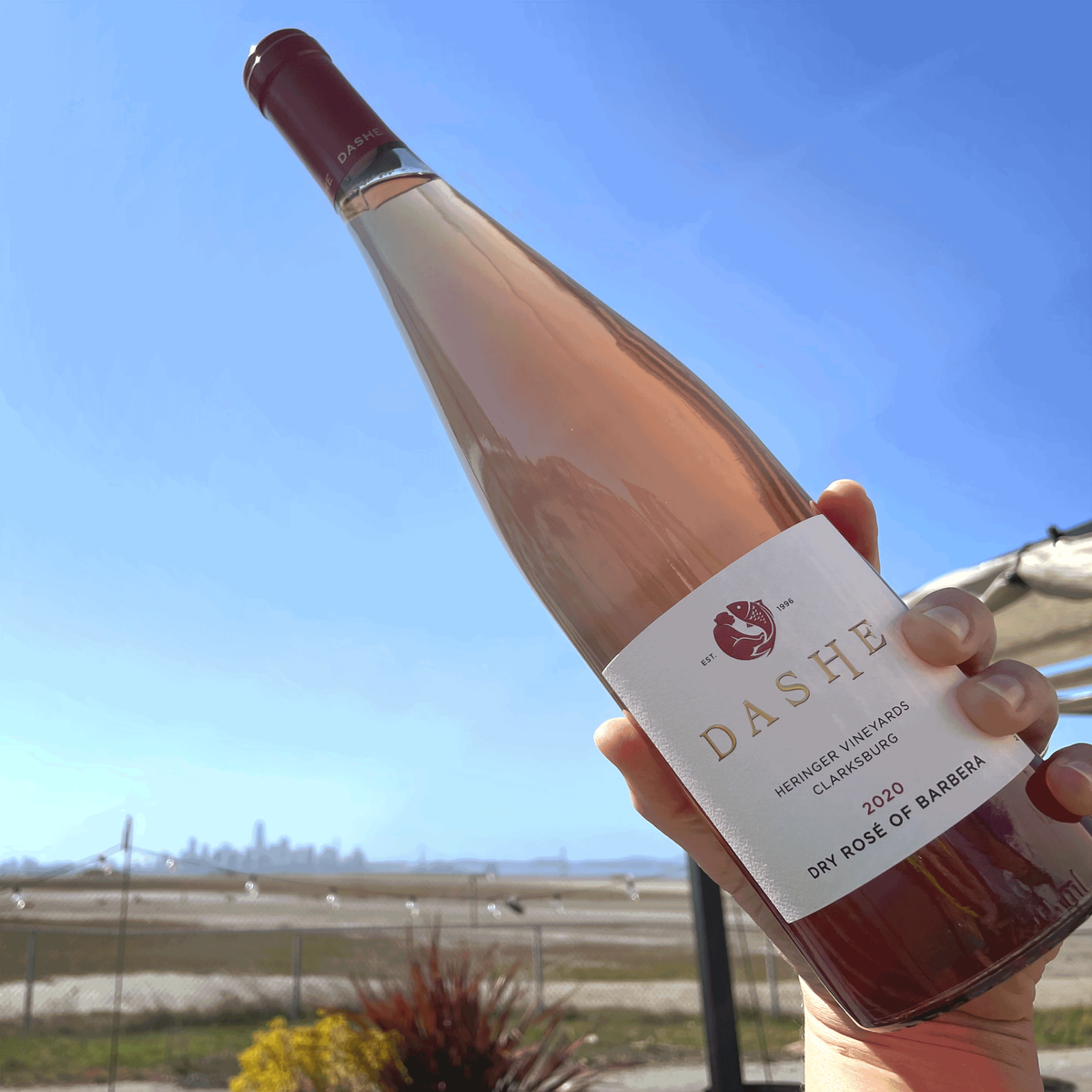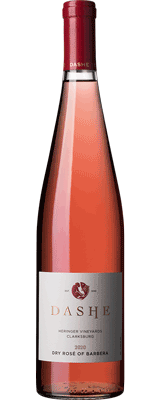Squeezing Grapes for Rosé: Artisan Wine Making Pink Style

It’s getting hotter, which means that rosé wines are getting popped into ice buckets and refrigerators. Every wine maker I know is releasing (or has released) a rosé, and Dashe Cellars is no exception.
I’ll confess, we have changed our methods of making rosé over the years. Quite a while ago, our method of making rosé was a relatively simple one. We would crush red grapes—usually Grenache grapes from Dry Creek Valley—which were destined to make a bigger, more substantial wine, and simply bleed off pink juice from the tank after about 8 hours of skin contact. Voilà! Instant rosé.
Let it Bleed
This process of making rosé by “bleeding” the tank is called “saignèe,” from the French word for blood, and is probably one of the most common methods of making rosé around the world.
There certainly are a few advantages to making a rosé this way. First of all, it’s a great way of improving the depth and intensity of the red wine in the tank from which you’re bleeding off the rosé juice. Since you’re increasing your grape to juice ratio, you get more color in the wine from which you’re bleeding off. Plenty of jet-black wines on the market are helped by bleeding the tanks.
Another definite advantage is that you can pick the color of your rosé by simply looking at the juice every few hours. As time goes by, you get more color until you decide you have enough color (or the right hue of pink) and then you frantically drain the juice off of the red skins before the color changes and becomes too dark.
The drawback to this method is that if you get your timing wrong, your rosé can be too light or too dark, and the only way to adjust is by blending red or white wine into your rose to try to adjust the color.
Hot off the Press
The other method, and the one that we’ve gravitated to over the years, is dedicating the grapes you select to be rosé (and only rosé). Using this method, you designate a vineyard (or a block within a vineyard) to be your rosé block and dedicate those grapes to just be used in your rosé program. You then pick the grapes exactly when you want to make your rosé and dump them directly into the press (or occasionally, crushing the grapes and letting them sit in bins for a bit of time to pick up color, and then dumping them into the press).
This direct press method has some distinct advantages.
First and most important, since you’re dedicating these grapes to be rosé, you can select the time of picking the grapes to be ideal for making a rosé-style wine. In our case, we like our rosé wines to have good acidity, so as long as the flavor profile is correct, you can pick grapes earlier than you normally would for making red wine, so that the wine is crisp and flavorful with acidity.
Second, you can select a varietal specifically for rosé. In our case, we decided to try to use Barbera from a Clarksburg vineyard as a rosé grape, because it’s a naturally high-acid grape and makes a very refreshing, zingy wine.
An added benefit of early picking is that your rosé is lower in alcohol because you’re picking grapes before they produce a high amount of sugar.
Color is king
The final reason we love to press our rosé directly from the grapes is that we obtain a beautiful pale salmon color; quite a bit different than the color that we would obtain using the saigneé method of bleeding the tank.
Of course, wonderful wines are made using both methods of wine making, and everyone has their preference for what kind of rosé they like.
Our rosés are finished completely dry because that’s our preference. Some people prefer a bit of sweetness to their rosés, which is completely a personal taste.
What’s important is that rosés have finally risen in prominence in the wine-drinking community.
Personally, I believe that there’s nothing better than a crisp, cold rosé on a Spring or Summer day, paired with something off of the grill or with a fish stew such as a French bouillabaisse. The acidity pares perfectly with food, and the wine itself provides an immensely satisfying way to balance the heat.

